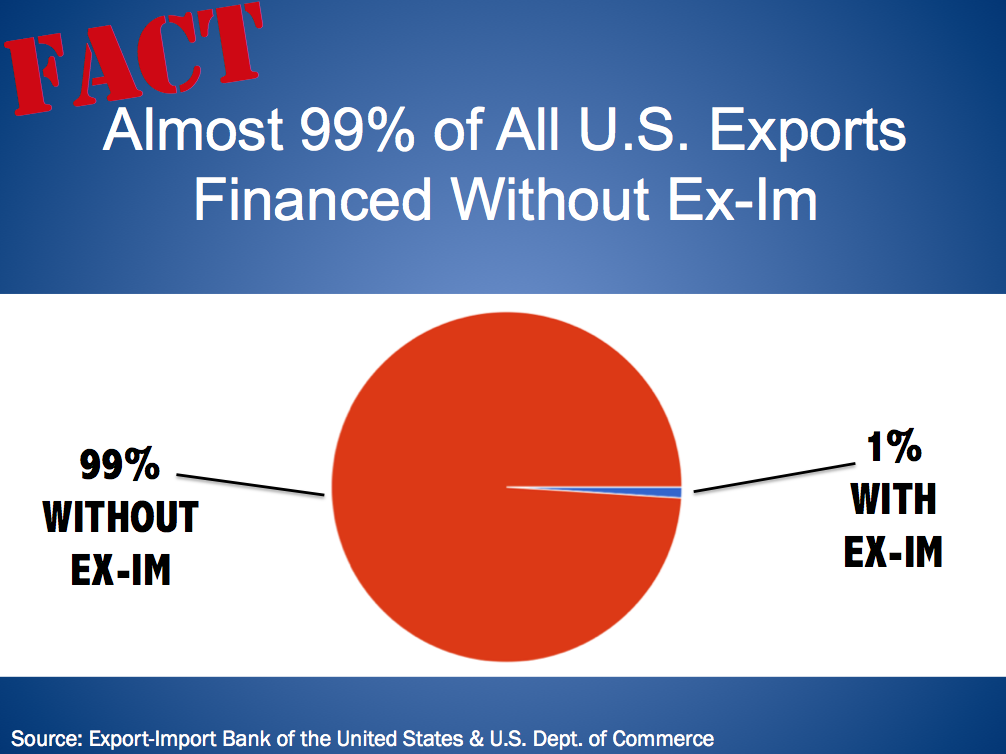5 Important Facts About the Export-Import Bank
Washington,
February 25, 2015
|
Staff
1). The Ex-Im Bank may harm as many jobs as it claims to support.
Government export finance assistance programs like Ex-Im “largely shift production among sectors within the economy rather than raise the overall level of employment in the economy.” - Government Accountability Office, “Export-Import Bank: Key Factors in Considering Ex-Im Bank Reauthorization” “[A]t best the Ex-Im Bank creates jobs in export industries by destroying jobs in non-export industries.” – Donald Boudreaux, Ph.D, Professor of Economics at George Mason University “By some estimates, the [Ex-Im] Bank’s loan guarantees have resulted in up to 7,500 lost U.S. carrier jobs, and up to $684 million of lost income for U.S. airline employees annually.” – Delta Airlines 2). The Ex-Im Bank doesn’t necessarily return money to the taxpayers. The non-partisan Congressional Budget Office reports that if Ex-Im followed more accurate accounting rules – Fair-Value Accounting – its ledger would show a cost to taxpayers of $200 million/year, or $2 billion over 10 years. -- CBO Fair-Value Estimate 3). Only 1% of 1% of America’s Small Businesses Benefit from Ex-Im. Congress requires that 20% of Ex-Im’s authorizations go to small businesses, but Ex-Im consistently fails to meet this statutory requirement. In reality, only .01% of America’s small businesses receive any help at all from Ex-Im. Instead, Ex-Im’s subsidies overwhelmingly benefit very large corporations. 4). The Ex-Im Bank uses American taxpayers’ money to help foreign corporations, including businesses that are owned by the governments of China, Russia, Saudi Arabia, and the United Arab Emirates. Of the 50 largest loans or guarantees approved by the Ex-Im Bank between FY2007-mid FY2014, 46% went to state-owned foreign companies or to a joint-venture that includes a state-owned company. 5). The Ex-Im Bank is not critical to our economy. It financed only about 1% of total U.S. exports in 2014.
|


